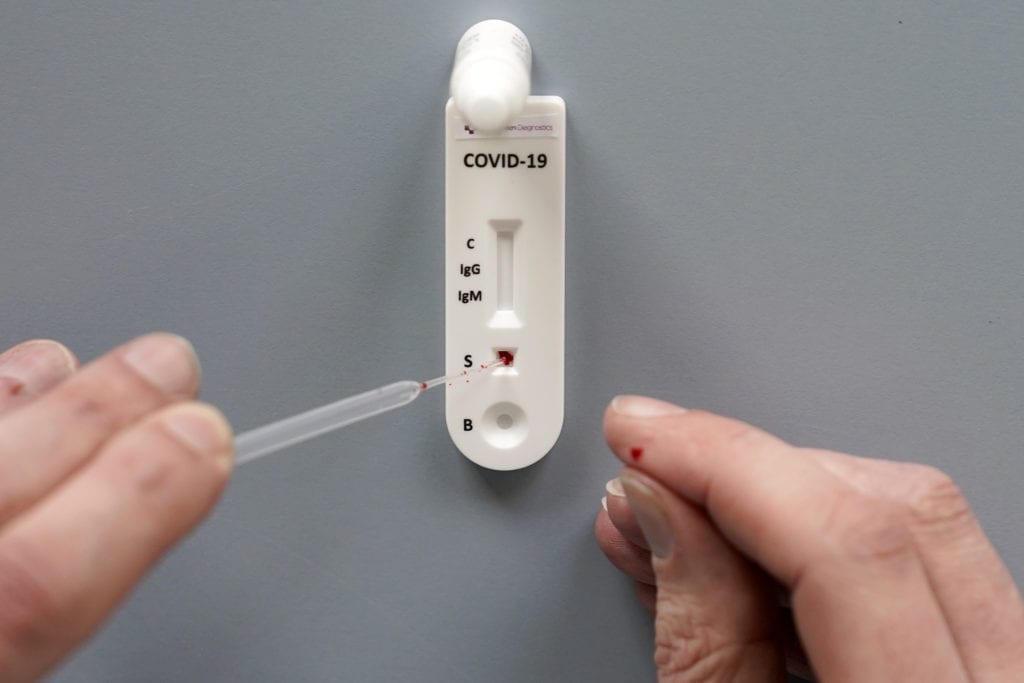The fact that there are different types of coronavirus test has been a cause for confusion. What is a PCR test? Why is an antibody test a “game changer”? And what on earth is antigen testing about?
This is chiefly a problem of communication, however. The differences between the tests used to combat COVID-19 are actually quite simple and easy to understand. But these differences have not always been clearly explained.
So what are the different tests, how do they work, and how can they be used in the battle against the new coronavirus?
What are the different tests?
There are three types of test which can be used to fight COVID-19, and they can be put into two broad categories.
First, there are the tests which test for the virus. These can tell you whether you have the virus right now by detecting certain signs of a person being infected.
There are two types of test which can do this. One is called a PCR Test, or sometimes an RT PCR Test. This test works by detecting specific genetic material within the virus.
Then there is an antigen test, which can also tell you if you are currently infected by the virus right now. As the name suggests, this detects viral antigens. The antigens being detected by this test are proteins on the coat of the SARS-CoV-2 virus, which causes COVID-19.
Secondly, there are antibody tests. These tests can tell someone whether they have had the virus in the past and have now produced antibodies to fight it.
This is because antibodies provide the body’s immune response to the SARS-CoV-2 virus. When a person successfully fights off the virus, these antibodies remain in a person’s blood for a time to protect against future infection. Detecting these antibodies means that someone has immunity to the virus. It is not the same as testing for the virus itself.
How are PCR tests carried out?
The PCR test detects genetic material within the virus, called RNA. A sample swab is taken from fluid or the lower respiratory tract. This swab is then sent off to a laboratory where it is processed. It is always a lab-based test.
The process which produces the result is a reverse transcriptase polymerase chain reaction. This requires several reagents – in this case, these are complex biological molecules which facilitate a biochemical reaction. The reaction used in the test in turn indicates whether viral RNA is present in the sample.
At the moment, in the UK, the average waiting time for a PCR test result – once transport and lab processing is taken into account – is thought to be about 24 hours.

How are antigen tests carried out?
The antigen test can be done in two ways. There is a lab-based version. This can be conducted by taking a sample from the respiratory tract, which is then sent off to a laboratory to see whether antigens are present in the sample.
Or there is a remote version, where the test is done using a lateral flow device. This is a kind of “dipstick” diagnostic device and looks similar to a pregnancy test. It doesn’t need to be sent off to a laboratory. It can be used at the point of care (POC), within a GP’s surgery or a living room.
Usually, a prick of blood will be taken from a finger, which is then put onto the sample pad of the lateral flow device. The lateral flow device then changes colour and indicates whether or not there are antigens present in a person’s blood or serum.
Some prototypes of this test can produce results very quickly, within about 10-30 minutes.
What about the antibody tests?
Antibody tests can also be lab-based or they can use a different version of the remote lateral flow device, one which is designed to detect the presence of antibodies rather than antigens.
It is important to understand that antibody and antigen tests are not the same. They may use the same biotechnology or diagnostic device, but they are not testing for the same thing.
The antigen test will tell you whether or not you currently have the virus.
The antibody test will tell you whether you have had the virus in the past, recovered from it, and produced antibodies against it.
What does “serological” mean?
The remote tests for antigens and antibodies are both sometimes called “serological” tests or “immunoassays”. The first description – serological – essentially means that they test a person’s blood.
The second description – immunoassays – means that they are measuring viral exposure and the presence of molecules which relate to the body’s immune system.
How do the remote antibody tests actually work?
A person’s blood comes into contact with the sample pad on the lateral flow test. If someone has immunity to the new coronavirus, the test kit will change colour to indicate the presence of antibodies.
This happens because the antibodies in the blood are used to targeting a specific “spike” protein on the outer coat of the SARS-CoV-2 virus. This protein helps the virus enter the body’s cells and is a key target of antibodies.
The developers of antibody test kits design a slightly altered version of this spike protein and reproduce large numbers of it to be used in the antibody test.
When a sample of a person’s blood is tested, the antibodies in it identify the target protein in the test as if it were that of the virus. They then bind to it, and trigger the colour change on the test kit. This yields a positive result, informing someone that they have immunity to SARS-CoV-2.

And the remote antigen tests?
These work in a similar way to the antibody tests, but in reverse.
Instead of designing a clone of the spike protein on the coat of the virus, the designers clone the antibodies which target the protein instead.
This means that, when a person’s blood is tested on the sample pad on the device, if there are viral antigens present in it, they will bind with the antibodies on the test, which recognise the antigens as their target, and trigger colour change.
Which tests are currently being used in the UK?
At the moment the UK is relying on PCR tests.
The Cabinet Secretary Michael Gove did say last week that the government is rolling out “antigen testing” for frontline health and social care staff.
But Dr Andrew Preston, Reader in Microbial Pathogenesis, University of Bath, has said that it is not clear whether any antigen test kits have actually received formal approval yet from Public Health England.
The Cabinet Secretary probably meant PCR tests – which also test for the virus. It is possible that antigen tests will be approved in the near future.
Public Health England and the government have said that they have purchased millions of antibody tests. But they have not yet been released for use on the public – PHE wants to be absolutely sure they work first.
Patrick Vallance, the government’s chief scientific adviser, has said that these could be a “game changer”.
For the moment, it is uncertain how accurate and effective the remote antigen and antibody tests will be. At this stage, good quality PCR tests are believed to be of superior sensitivity and accuracy, even if it requires good supplies of reagents and more lab capacity to carry them out.
Read More:
Why is Germany able to test for coronavirus so much more than the UK?
How do antibody tests for coronavirus work?
Will the UK’s new COVID-19 tests work?
Coronavirus testing: why there is a shortage of reagents
Scientists are beginning to better understand the new coronavirus
Why developing an antibody test for coronavirus is almost as important as finding a vaccine
Detailed information on testing from UK experts:




